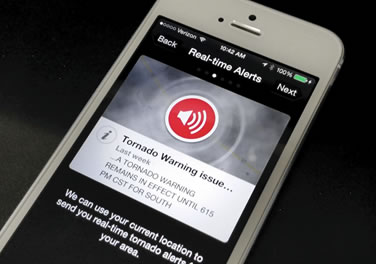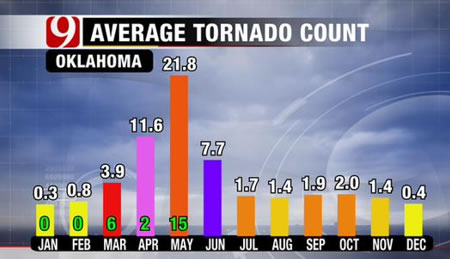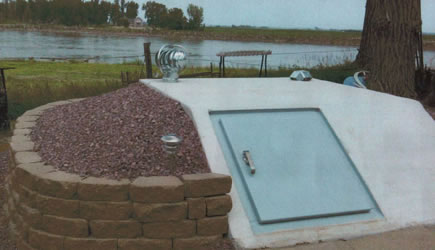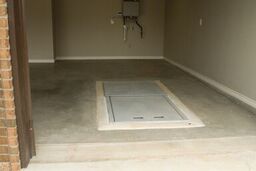Tornado Warning Signs You Need to Know
Why It's Important to Have Tornado Insurance
 By now, we have seen the devastating effect of tornados. There were 897 confirmed tornados in 2014 that occurred in the U.S. alone. Although people living in Tornado Alley are the most vulnerable, they can and will strike anytime at any place. This is precisely why having tornado insurance is a must for homeowners.
By now, we have seen the devastating effect of tornados. There were 897 confirmed tornados in 2014 that occurred in the U.S. alone. Although people living in Tornado Alley are the most vulnerable, they can and will strike anytime at any place. This is precisely why having tornado insurance is a must for homeowners.
The time to protect your family, home, and personal property is not AFTER disaster strikes – it should be BEFORE the disaster. First things first. You should never assume that your homeowner's policy automatically covers tornado damage. Many insurance companies exclude certain coverages in high risk areas. While tornado damage is generally covered under "wind damage" in your policy, this may not always be the case. Even if you are covered, it may not be to the degree that you need. In order to find out, you must contact your agent.
Give them a call and ask if you are covered. If not, inquire as to what types of coverages they offer. Next, take detailed photos of the inside and outside of your home, preferably from different angles. Make sure to include ceilings, floors, windows, walls, roof, sheds and garages. Doing so will help demonstrate their condition before any damage has occurred. Also, take pictures of all your important valuables. Keep a list and save all your receipts!
Planning ahead and doing your due diligence is the key to staying safe during tornado season. Don't delay and contact your insurance agent today!
How Important Mass Notifications Can be During Tornadoes
 Not only does springtime bring flowers and sunshine, but also high storm season. One of the dangerous byproducts of these weather conditions is flooding and tornadoes. There are many ways to protect yourself during a tornado, but being prepared and having adequate notice to take action is critical.
Not only does springtime bring flowers and sunshine, but also high storm season. One of the dangerous byproducts of these weather conditions is flooding and tornadoes. There are many ways to protect yourself during a tornado, but being prepared and having adequate notice to take action is critical.
Many cities that are in the direct path of tornados year after year, have outdated systems to warn their residents when threatening weather is approaching. And every year we see reports of deaths from these destructive weather patterns. Losses not only occur in populated areas, but many times in rural areas where sirens or other older forms of warning systems may not be effective.
Sirens, while they give a warning when the situation is critical, may not allow time for adequate safety measures to be taken and are unable to provide other more critical information needed to protect the public when a tornado is a possibility.
Technology Can Save Lives!
As technology has developed, so has the ability to provide mass notification to a large number of people with one simple phone call. Notification grid maps can be designated by county, zip code, district, or whatever criteria the emergency service department desires. Mass notification systems are easy, economical and efficient with user-friendly implementation.
With one call from authorities, a message can be transmitted instantly via text, email or voice mail. The older methods of notification through a television broadcast may not reach all people in the area in time or at all, should there be an electrical outage. Mass messaging is instantaneous and storm information can be figured out rapidly. Additionally, after the storm has passed, resources, aide and shelter information can be dispatched through this messaging system as well.
During tornado season, storms can rip across your county or town leaving those who are unaware injured or even dead. Mass notification systems can save lives and every county emergency service should be utilizing this affordable public safety tool. If you live in an area prone to dangerous weather, educate yourself on what you need to do to stay safe. Check out our recent article An Amateurs Guide to Surviving a Tornado.
As we brace for a severe weather season this year, make sure your county takes advantage of the existing technology of mass notification systems and utilizes this easy-to-use, economic and effective way to warn residents of impending danger.
Tornado Survival Skills & Tips
 Tornados are often considered nature's most violent storm. Every year tornados leave death and destruction in their wake. Nature’s fury is a part of life, and for all of those who perish in these storms, many more survive. Below you will find facts and tips that can help increase your chances for survival.
Tornados are often considered nature's most violent storm. Every year tornados leave death and destruction in their wake. Nature’s fury is a part of life, and for all of those who perish in these storms, many more survive. Below you will find facts and tips that can help increase your chances for survival.
Tornado Facts
We recently gave you some tornado facts, but believe it or not, there are even more facts about tornados that we would like to share:
- Tornados can leave damage paths in excess 50 miles long and one mile wide, and can have winds that reach up to 300 miles an hour.
- They can strike quickly, with little or no warning.
- Most tornados have a forward speed of 30-70 miles an hour.
- A tornado can appear nearly transparent until they pick up dust and debris.
- The largest percentage of tornados occur between 3 pm. and 9 pm.
- Most tornados move in a SW to NE direction.
- Tornados that form over water are called waterspouts.
- Flying debris is the leading cause of death during a tornado.
Before a Tornado
Oftentimes there are tornado warning signs. Below are a few tips about out how to stay best prepared:
- Always be alert to changing weather conditions.
- Listen to NOAA Weather Radio or the news for updated reports and advisories.
- Be prepared to take shelter if needed.
- Look for these tornado danger signs: dark, or green skies, hail, dark low-lying clouds, cloud rotation and a loud roaring sound similar to a freight train.
During a Tornado
Take shelter immediately! If you're in a home, building, or other structure take shelter in a safe room, basement, outdoor storm shelter or garage shelter. If a shelter is not available then take refuge on the lowest level of an interior room away from windows and doors (like a closet). Also make sure to protect your head and neck. If you are in a vehicle or mobile home get out quickly and find suitable shelter; never try to outrun a tornado!
If you are outside, then move indoors if possible. If an indoor shelter is not possible, then lie flat in a ditch or depression and cover your head with your hands. Do not get under an overpass or bridge unless it is your only alternative. Many people believe an overpass is a safe location but the fact is that the winds can accelerate substantially under an overpass. Overpasses also offer very little protection from flying debris and many people have been killed taking shelter under overpasses and bridges.
Tornado Shelters
Your decision to install storm shelter could one day save your life, and the lives of your friends and family. So what are you waiting for? Order your storm shelter today!
What Are Tornado Myths & Truths
 There are a lot of misconceptions about tornados out there. In this article, we are going to dispel some tornado myths and give you some truth!
There are a lot of misconceptions about tornados out there. In this article, we are going to dispel some tornado myths and give you some truth!
MYTH: Areas near lakes, rivers and hills are safe from tornados.
TRUTH: No place is safe from tornados. The tornado that struck Door County, WI in August 1998 formed on the waters off of Green Bay and moved ashore, causing over $5 million in damage.
MYTH: The low pressure of a tornado causes buildings to explode as the tornado passes overhead.
TRUTH: Violent winds and debris slamming into buildings cause mostly structural damage.
MYTH: Windows should be opened before a tornado approaches to equalize pressure and minimize damage.
TRUTH: Leave windows alone. The most important action is to immediately go to a safe shelter.
MYTH: People caught on the road should seek shelter under highway overpasses.
TRUTH: Take shelter in a sturdy, reinforced building if possible. The winds of a tornado may actually increase in the tight space of an overpass, increasing the chance of injury. No buildings nearby? Find out what to do!
MYTH: Tornados do not strike the same place twice.
TRUTH: Tornados can strike any time, any place (regardless of past history). As an example, Cordell, KS was hit by tornados on the same day three years in a row!
MYTH: A tornado is more likely to hit a mobile home park.
TRUTH: Tornados are not more likely to hit a mobile home, but the chances of doing more damage are greater. Even super weak tornados can flip a mobile home!
MYTH: Tornados can always be seen from far away.
TRUTH: Not only do tornados not always have to appear as a visible funnel cloud, but they can also be hidden by heavy rainfall during the day or by the dark of night.
MYTH: Tornados do not hit big cities.
TRUTH: Tornados can hit anywhere! Several large cities that have been hit include: Dallas, Miami, Minneapolis, Oklahoma City and Wichita.
Autumn Tornado Facts in Oklahoma
 Autumn in Oklahoma may bring to mind blue skies, comfortable afternoons and crisp nights, but many areas of Oklahoma will experience severe weather and tornados during this time. In fact, October is the busiest month for tornados in Oklahoma outside of high storm season (March – June).
Autumn in Oklahoma may bring to mind blue skies, comfortable afternoons and crisp nights, but many areas of Oklahoma will experience severe weather and tornados during this time. In fact, October is the busiest month for tornados in Oklahoma outside of high storm season (March – June).
We recently wrote about Oklahoma tornado averages by month, and it is clear that activity peaks in the spring and increases slightly again in the autumn. This secondary peak happens when the jet stream shifts farther south after retreating northward during the summer months. An active jet stream pattern provides the deep wind necessary for supercells and large outbreaks of severe storms.
There have been 129 tornados reported in Oklahoma in the month of October since 1950. Also, 1998 was the most active October with 27 tornados reported statewide!
Autumn tornados are slightly less likely to be strong or violent than their spring counterparts. About 20% of autumn tornados are rated F2 or stronger compared to 28% in the spring. Catastrophic F4 or F5 tornados are rare outside of the spring season. That being said, damaging and deadly tornados can happen at any time of the year.
The strongest tornado that took place in the fall happened on October 5, 1970. An F4 tornado struck Shawnee and Prague then dissipated in Okfuskee County. That particular storm killed four people and injured 84.
An unusually wide F2 tornado injured four people in Haydenville on October 4th, 1998. That system spawned six other tornados in northeast Oklahoma and a hailstorm that damaged hundreds of roofs and windows in Okmulgee.
Tulsa County in particular has experienced three weak tornados in the month of October (1983, 1991 & 1998). The 1983 tornado occurred on the flank of a microburst that damaged South Intermediate High School in Broken Arrow.
So far, 2015 has seen above average tornado outbreaks during high storm season. We will soon find out if this trend continues as we move into October.
How to Effectively Store Items in Your Storm Shelter
 Does your heart start pounding at the thought of a tornado? We can’t blame you! These bad boys of nature are fast, heartless, and devastating. How do you stand up to one of nature’s most destructive forces? By building a storm shelter of course! If you are thinking of getting a tornado shelter installed, or already have one, storage is a very important part of your shelter.
Does your heart start pounding at the thought of a tornado? We can’t blame you! These bad boys of nature are fast, heartless, and devastating. How do you stand up to one of nature’s most destructive forces? By building a storm shelter of course! If you are thinking of getting a tornado shelter installed, or already have one, storage is a very important part of your shelter.
We recently wrote about what to keep in your storm shelter. Now, we will give you some tips for storm shelter storage ideas. Check them out below:
- Place bins under the benches to add storage space without using the limited floor space in your storm shelter.
- Use hollow ottomans for additional storage.
- Storage can also be used for bottled water, snacks and medications.
- Hang baskets high.
- Install shelving for radio, flashlight, water, etc.
We hope this helps! If you have any storm shelter storage examples of your own, send them to us and we might feature your pictures on our website or Facebook!
|
< Previous
<< First |
Go to > 3 4 5 6 7 8 9 |
Next >
Last >> |







